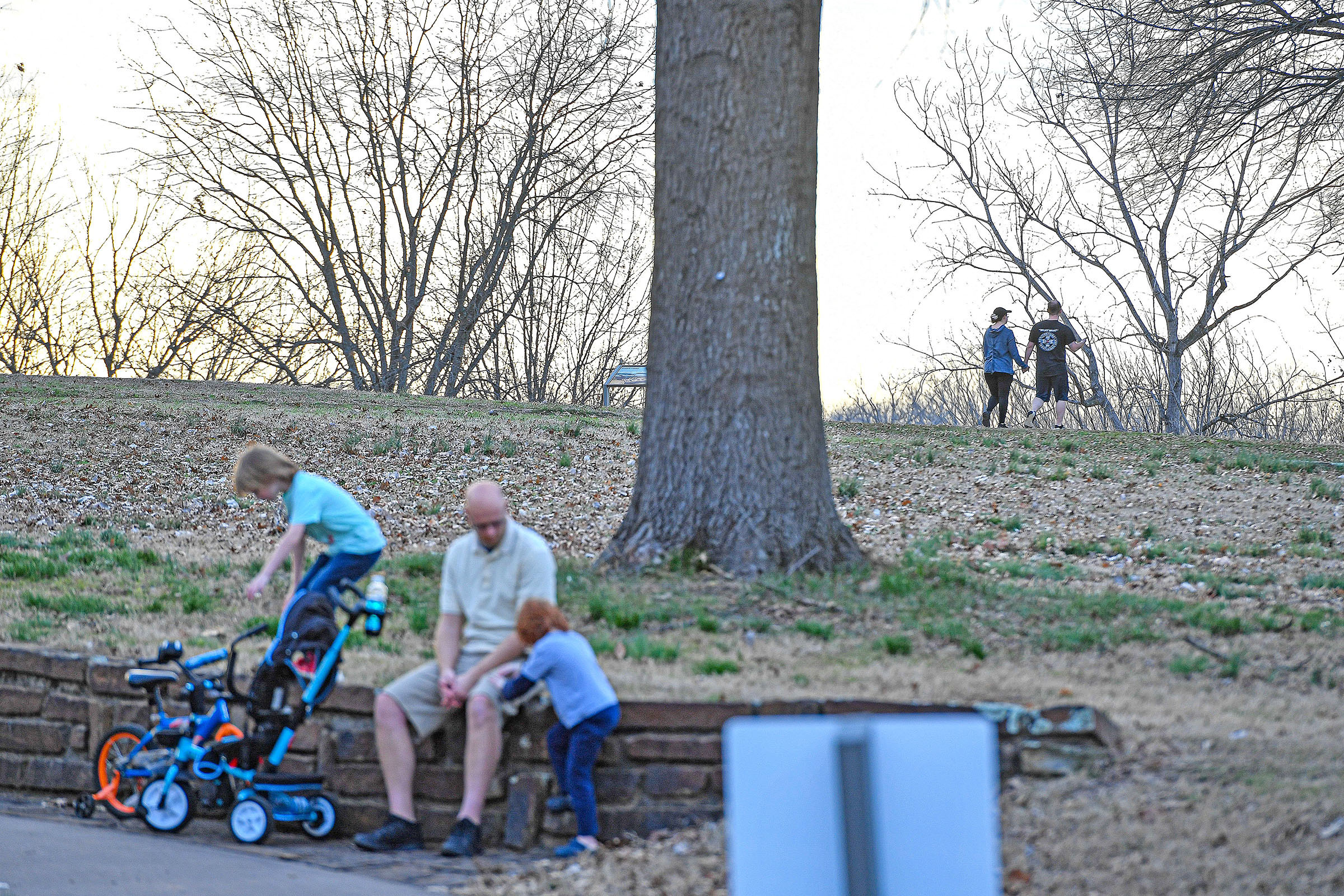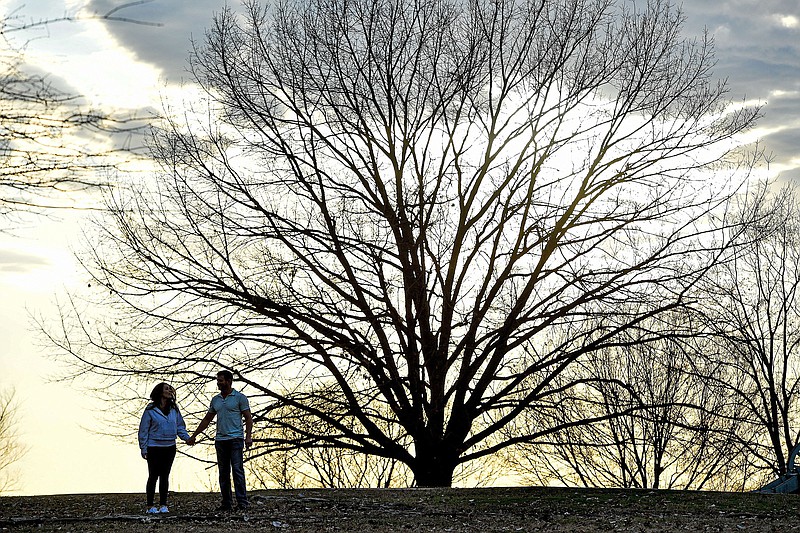FORT SMITH -- Nearly 96% residents support improving bicycle conditions in the city, according to an online survey by transportation consultant Laneshift that received 656 community responses.
Michael Mings, city mobility coordinator, presented the findings and other results from Laneshift's audit during a city directors study session Tuesday.
The city hired Laneshift to review walking and biking transportation practices, Mings said. The audit portion started in November, with questions asking whether people care about improving sidewalks and trails in the city, and whether they would use existing infrastructure if it were made more accessible, he said.
Nearly half of the respondents said they don't feel safe or comfortable riding a bike in Fort Smith. About 46% said they would prefer shared-use paved paths or greenways separate from vehicle traffic and/or riding on quiet, residential streets.
About 77% of respondents said it's very important to improve walking conditions in the city, noting they either use walkways for health and exercise, recreation, quality of life, transportation, community building or connectivity to local destinations, such as parks, restaurants and schools.
"It's difficult to get 90% of people to agree on anything these days, but when it comes to the different purposes and benefits of having good conditions for mobility, people in Fort Smith are in agreement," Mings said.
Respondents' reasons for not walking or biking in the city include a lack of connectivity between destinations, they're unsure of safe routes, insufficient maintenance of facilities, aggressive motorist behavior, unsafe street crossings and personal safety concerns.
"Our current trail and sidewalk system, as great and as improving as much as our infrastructure is, in many areas can fall short of getting people to the places they'd like to go," Mings said. "Just an honest look at where we are today in Fort Smith. But thankfully, this is something that we are addressing."
Fort Smith has a trail plan that will total 31.3 miles among 10 trails, according to the city's website.
The Trails and Greenway Master Plan created in 2004 recommends the implementation of an 88-mile network of off-road, multi-purpose trails throughout the city.
Mings said directors have supported projects that will fix the lack of connectivity. The city plans to submit a request for bids for a bike and pedestrian plan in the next two weeks, which will take about a year to 18 months to complete, he said.
At-large Director Kevin Settle asked how a potential bike and pedestrian plan will relate to the existing trail plan.
"It'll implement a lot of the trails and greenway plan," Mings said. "But a lot of those projects have not been completed. So I think it'll take the best of what that master plan was suggesting and try to incorporate that into the bike and ped plan. So it will incorporate trails as well as street and sidewalk infrastructure."
Mings said different committees will make recommendations to the Parks Commission to determine the priority of different projects.
Ward 3 Director Lavon Morton asked how much the the completion of the May Branch trail will improve connectivity within the city just in the next two years.
Mings said it will be the most connected trail in Fort Smith, providing access to Martin Luther King Park and the Riverfront Trail, which then connect to downtown and its amenities.
City Administrator Carl Geffken said the city is also already looking for ways to pay for new trails.
"It is a fair characterization of the work that Laneshift has taken on to update and revitalize our master plans around mobility, number one, that opens us up for more eligibility for grants because it's a more up to date plan," Ward 1 Director Jarred Rego said. "But the planning process that Laneshift is going through is taking into account things that we've already constructed or that are imminent, like the May Branch trail. Aside from the things we've already done and the things that are imminent in the short and medium term, they are also tasked with making some recommendations to help us focus efforts moving forward."
 Trail-goers walk and visit, Wednesday, Feb. 15, 2023, along the River Trail in downtown Fort Smith. At the city’s Board of Directors meeting on Tuesday, Mobility Coordinator Michael Mings discussed how the city hired an active transportation consultant, Laneshift, to do an audit for improving mobility in Fort Smith. This includes the need to improve trails and walkways throughout the city. Visit nwaonline.com/photo for today's photo gallery. (River Valley Democrat-Gazette/Hank Layton)
Trail-goers walk and visit, Wednesday, Feb. 15, 2023, along the River Trail in downtown Fort Smith. At the city’s Board of Directors meeting on Tuesday, Mobility Coordinator Michael Mings discussed how the city hired an active transportation consultant, Laneshift, to do an audit for improving mobility in Fort Smith. This includes the need to improve trails and walkways throughout the city. Visit nwaonline.com/photo for today's photo gallery. (River Valley Democrat-Gazette/Hank Layton)
